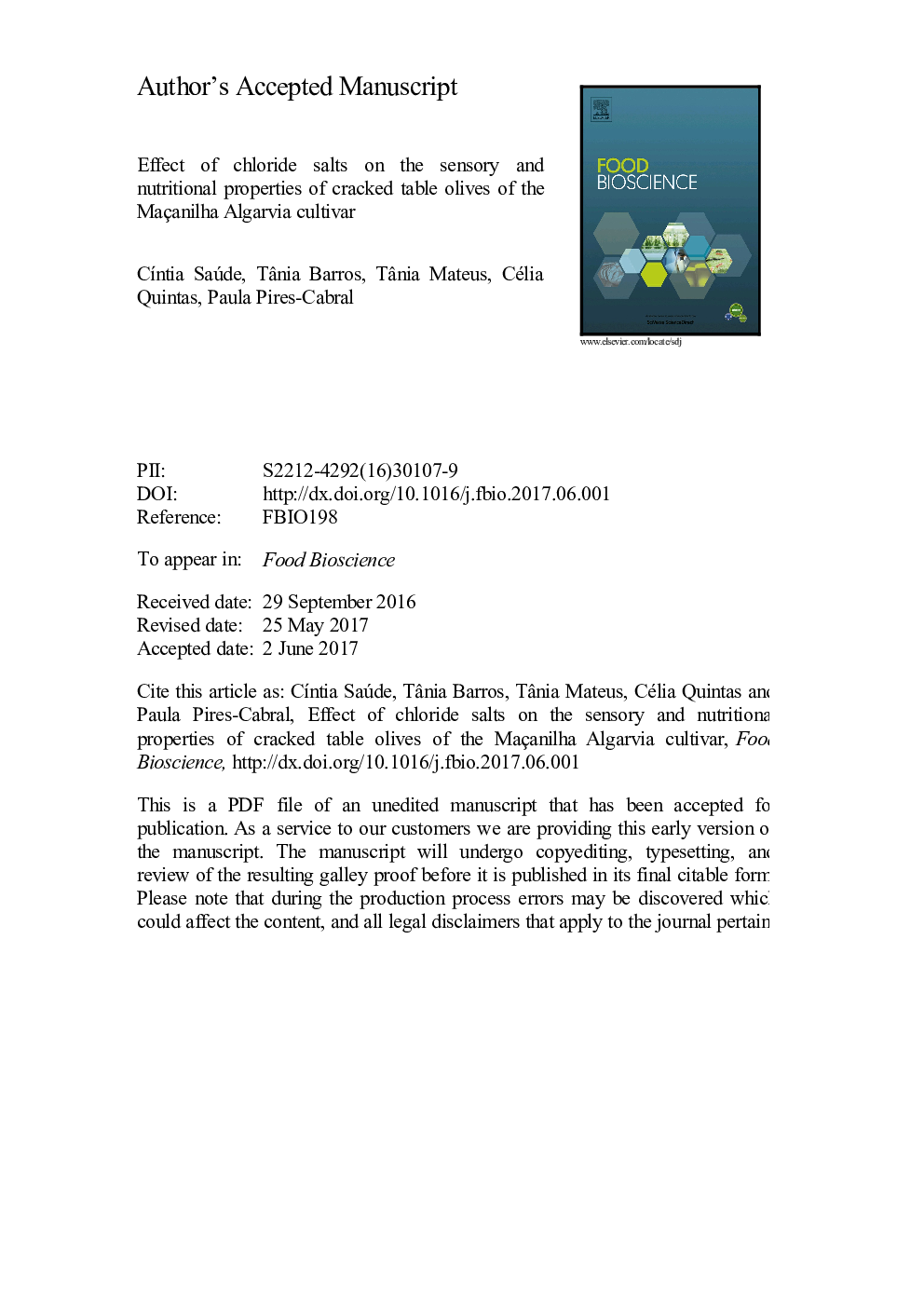| Article ID | Journal | Published Year | Pages | File Type |
|---|---|---|---|---|
| 4753098 | Food Bioscience | 2017 | 37 Pages |
Abstract
The effect of sodium chloride replacement with potassium chloride and/or calcium chloride in the fermentation brines on the physicochemical, organoleptic and nutritional profiles of cracked table olives was studied using no more than 8% salt. Although all brines led to vigorous fermentation with the desired characteristics of acidity and saltiness, the sensory panel rated the olives fermented in 8%NaCl and 4%NaCl + 4%KCl as the best, in terms of flavor and overall attributes. The olives fermented in the other brines (4%NaCl + 4%CaCl2, 4%KCl + 4%CaCl2 and 2.7%NaCl + 2.7%KCl + 2.7%CaCl2) were not acceptable. Olives fermented in 4%NaCl + 4%KCl had lower fat, carbohydrates, dietary fiber, calories and similar amounts of phenolic compounds and Ca as the 8%NaCl treatment. In addition, the former had increased K (672%) and reduced Na (19%), making them more nutritionally acceptable. This alteration might be beneficial and allow the olive market to reach new customers or present current customers with a potentially healthier product.
Related Topics
Physical Sciences and Engineering
Chemical Engineering
Bioengineering
Authors
CÃntia Saúde, Tânia Barros, Tânia Mateus, Célia Quintas, Paula Pires-Cabral,
